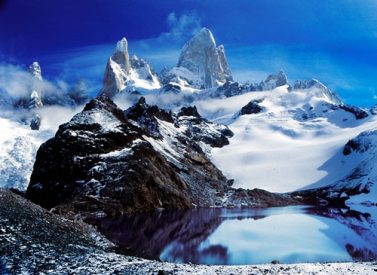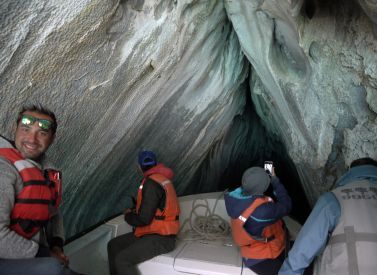Patagonia in autumn or spring.
 by Kathy Jarvis on 19th January, 2018
by Kathy Jarvis on 19th January, 2018

Patagonia out of season.
Two of Patagonia’s most iconic destinations are the Torres del Paine National park in Chile and the Glaciares National Park near the Argentine towns of El Calafate and El Chalten.
The granite spires, glaciers, spectacular scenery and wildlife are a magnet to the adventurous traveller and nature lover.
High season is from November through February when the parks are at their busiest and most expensive. The days are longer in this period but the winds tend to be stronger.

When is it best to visit PATAGONIA?
Spring (October) and autumn/fall (March/April) are well worth considering, and we here in our office, this would be our travel time of choice.
Here are some of the reasons we recommend travelling to Patagonia out side of peak season:
Less wind
The Patagonian winds can be fierce and they are at their strongest in the peak of summer. There is no guarantee on any weather conditions but travelling in spring or summer you are much less likely to encounter really strong winds.
Fewer people
If you travel in peak season you will have to book well in advance as the accommodation options fill up quickly. The trekking trails will be busy and the roads too. Visiting in spring/autumn will give you better accommodation availability and more options as well as less traffic on the trail.
Better wildlife spotting opportunities
With fewer people on the trails there are greater chances to spot wildlife – maybe the shy huemul (small Andean deer), a red or grey fox, or maybe an armadillo and if really lucky the elusive puma. Guaranteed will be guanacos, a relative of the llama.
Autumn/Fall Colours in southern beech trees
In March and April the leaves start to change their colours giving spectacularly colourful photo opportunities and a splendid panorama.
Fabulous flowers in spring time Patagonia
In October it is the height of spring in Patagonia, so this is the best time for flowers and for seeing young animals, just born.
Torres del Paine, Winter wonderland
The winter season, May through to September, finds many of the accommodation options in Chile’s Torres del Paine National Park closed. Some hotels stay open each winter but this might change so it is best to check beforehand.
In Patagonia in winter the days are much shorter – between 8 to 12 hours of daylight – but the park is virtually void of tourists.
If you want this magical destination all to yourself, then this is the time to visit. The chances of seeing the wildlife are also greater as many animals come down from the mountains in order to search for food.
For those in the know, winter is first choice of time to go.
Weather wise it will be cold (possibly below freezing), with a chance of snow and low visibility, rain likely but spectacular sunshine is not uncommon.
A good option is our Winter self drive programme from Punta Arenas. Activities can be arranged from the hotel. There are self guided treks possible too – you just have to manage your time well to fit the daylight available.
Combining Torres del Paine with Los Glaciares National park can be a bit more problematic as scheduled public buses may not run (they only operate with a minimum number of bookings) and the roads/border crossings can be subject to closures due to weather conditions.
If you are planning to go to Southern Patagonia in Winter it is best to plan either Chile or Argentina. A great option in Argentina is the Winter in Argentinian Patagonia programme.
You can also check out some of Kathy’s Patagonia in Autumn photos on facebook.
Contact us for further information or to help you plan your Patagonia adventure in shoulder or off season.
Share


 a Group Tour
a Group Tour  a Tailor Made Tour
a Tailor Made Tour 











